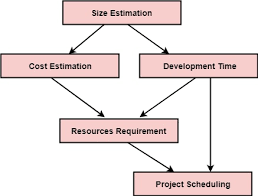Software Development Testing: Ensuring Quality and Reliability
In the world of software development, testing plays a crucial role in ensuring the quality and reliability of the final product. It is an essential process that helps identify defects, bugs, and errors before the software is released to end-users. In this article, we will explore the importance of software development testing and its various methodologies.
Why is Software Development Testing Important?
Bug Detection: Testing helps in identifying bugs or defects in the software. By running various test cases and scenarios, developers can uncover issues related to functionality, performance, security, and usability. Early detection of bugs allows for timely fixes, reducing the chances of major issues occurring in production.
Quality Assurance: Testing ensures that the software meets all specified requirements and functions as intended. It helps maintain high-quality standards by validating that each component works correctly individually and in conjunction with other parts of the system.
User Satisfaction: A well-tested software application provides a seamless user experience by minimizing crashes, errors, or unexpected behavior. By thoroughly testing different use cases, developers can ensure that end-users have a positive interaction with the software.
Software Development Testing Methodologies:
Unit Testing: This method involves testing individual components or units of code to ensure their correctness. It focuses on verifying that each unit performs as expected according to its design specifications.
Integration Testing: Integration testing validates how different modules or components interact with each other within a larger system. It checks for any inconsistencies or issues arising from their integration.
System Testing: System testing evaluates the entire system as a whole to verify if it meets all functional requirements outlined during development. It includes testing different scenarios to simulate real-world usage conditions.
Performance Testing: Performance testing measures how well a software application performs under varying workloads and stress conditions. It helps identify bottlenecks or performance issues that may impact user experience.
Security Testing: Security testing assesses the software’s ability to protect data and systems from unauthorized access, vulnerabilities, and potential threats. It includes penetration testing, vulnerability scanning, and risk assessment.
User Acceptance Testing (UAT): UAT involves end-users testing the software in a real-world environment to ensure it meets their specific needs and expectations. It helps validate that the software aligns with user requirements.
Conclusion:
Software development testing is an integral part of the development lifecycle. It ensures that software applications are reliable, functional, secure, and meet user expectations. By employing various testing methodologies throughout the development process, organizations can minimize risks, enhance product quality, and deliver a superior user experience. Testing is not just a one-time activity but an ongoing process that continues even after deployment to ensure continuous improvement and maintenance of the software’s performance and reliability.
Unveiling Software Development Testing: Understanding System, General, QA Testing, and the Role of a Test Developer
- What is system testing in software development?
- What is testing in software development?
- What does a software test developer do?
- What is QA testing in software development?
What is system testing in software development?
System testing in software development is a crucial phase that evaluates the entire system as a whole to verify if it meets all functional requirements outlined during development. It focuses on testing the integrated system to ensure that all components work together seamlessly and perform as expected. System testing involves executing various test scenarios, including positive and negative cases, to simulate real-world usage conditions. This type of testing aims to identify any inconsistencies, defects, or issues that may arise from the interaction between different modules or components. By conducting thorough system testing, developers can ensure that the software functions correctly, meets user requirements, and delivers a high-quality user experience.
What is testing in software development?
Testing in software development refers to the process of evaluating a software application or system to ensure that it meets the specified requirements and functions as intended. It involves running various test cases, scenarios, and simulations to identify defects, bugs, and errors before the software is released to end-users. Testing plays a critical role in ensuring the quality, reliability, and performance of the software. It encompasses different methodologies such as unit testing, integration testing, system testing, performance testing, security testing, and user acceptance testing. By thoroughly testing the software throughout its development lifecycle, organizations can deliver a high-quality product that meets user expectations and provides a seamless user experience.
What does a software test developer do?
A software test developer plays a crucial role in the software development process. Their primary responsibility is to design, create, and implement test plans, test cases, and automated testing frameworks to ensure the quality and reliability of software applications. They work closely with the development team to understand the software requirements and design comprehensive testing strategies. A software test developer also performs various types of testing, such as functional testing, performance testing, and security testing, to identify defects or bugs in the software. They analyze test results, report issues to the development team, and collaborate on resolving them. Their expertise in writing efficient and effective tests helps improve the overall quality of the software product and ensures that it meets all specified requirements before release.
What is QA testing in software development?
QA testing, also known as Quality Assurance testing, is a crucial aspect of software development. It involves a systematic process of evaluating and validating software to ensure that it meets the desired quality standards. QA testing focuses on identifying defects, bugs, and errors in the software through various testing techniques and methodologies. It encompasses activities such as test planning, test case creation, test execution, defect tracking, and reporting. The primary goal of QA testing is to ensure that the software functions as intended, meets all specified requirements, and delivers a seamless user experience. By conducting thorough QA testing throughout the development lifecycle, organizations can enhance the overall quality and reliability of their software products.




